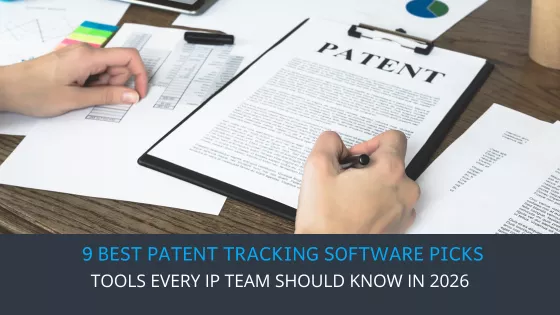As the agricultural industry continues to evolve, drones are emerging as a game-changing technology, enhancing precision, efficiency, and sustainability in farming practices. The latest patents reveal innovative applications of drone technology, from mapping and monitoring to targeted spraying and autonomous operations.
Here’s a look at some of the most recent patents that showcase the transformative potential of drones in agriculture.
Mapping Fields for Precision Agriculture (US20240180062A1)
Patent US20240180062A1 introduces an Agricultural Assistance System where drones map agricultural fields before autonomous machinery operates. By capturing the field’s shape and generating a virtual representation, this system allows machinery to plan travel paths accurately, avoiding obstacles and irregularities.
This pre-mapping ensures precise and efficient field operations, reducing time and resource wastage while enhancing overall productivity. This advancement is developed by Kubota Corporation, demonstrating their innovation in agricultural technology.
Optimizing Agrichemical Application (US20240161209A1)
The Highly Responsive Farming Systems with Extraordinary In-Season Optimization patent (US20240161209A1) employs drones to apply agrichemicals in multiple passes instead of traditional ground implements.
Drones generate reapplication prescriptions based on scouting imagery, allowing for targeted and optimized application throughout the season. This method significantly reduces waste and crop damage, maximizing yield and return on investment. This innovative approach to sustainable farming is attributed to Climate LLC.
Predicting Crop Size and Yield (US20240116630A1)
Patent US20240116630A1 describes a System and Method for Predicting Crop Size and Yield using drone or satellite images. By capturing multiple image sets of an orchard over time, the system identifies and sizes fruit, providing accurate yield estimates. This approach surpasses traditional manual counting and historical data-based predictions, offering a more precise and scalable solution for farmers. This significant advancement in crop yield prediction technology comes from Aerobotics (Pty) Ltd.
Optimizing Irrigation and Fertilizer Application (US20240168001A1)
The Method and System for Optimization Irrigation and Fertilizer Application Based on Plant Stress patent (US20240168001A1) uses wireless soil condition sensors that can be moved without digging. These sensors transmit data wirelessly, and AI estimates soil conditions at previous sensor locations. This system optimizes the use of water, fertilizer, and chemicals, reducing waste and promoting sustainable farming practices. This precision agriculture innovation is developed by Gravity Technologies, LLC d/b/a Groundworx.
Autonomous Phenotype Imaging (US20240155240A1)
US20240155240A1 details an Autonomous Phenotype Imaging System that uses a vacuum mechanism to acquire and image leaves consistently. The mobile base moves to plants in the field, vacuuming leaves for consistent imaging. This automated approach ensures accurate phenotyping, crucial for high-throughput plant research and agriculture, enabling more precise and efficient data collection. This advancement is brought by the Purdue Research Foundation.
Selective Agricultural Spraying (US11971725B2)
Patent US11971725B2 introduces a System and Method for Performing Spraying Operations with an Agricultural Applicator. This involves two autonomous vehicles: one detects and maps weeds, while the other precisely sprays them. This targeted application minimizes pesticide use, focusing only on weed areas and avoiding unnecessary coverage, thereby reducing environmental impact and improving efficiency. This precision spraying technology is an innovation by CNH Industrial America LLC.
Automated Data-Based Irrigation (US11944047B2)
The Automated Data-Based Irrigation System and Method patent (US11944047B2) employs a drone to optimize crop irrigation by collecting real-time data on crop conditions. Launched from an irrigation pivot, the drone surveys the crop area and gathers data to customize the irrigation cycle. The drone’s landing position is calculated based on the pivot’s movement, ensuring efficient and precise irrigation management. This efficient irrigation system is developed by Darren Rajendranath.
Biological Pest Control (US11952118B2)
Patent US11952118B2 outlines a Method and Apparatus Used for Biological Control of Agricultural Pests using an aerial drone system. The drone disperses beneficial insects and mites for biological pest control. The onboard container holds and disperses insects accurately over crops, enabling rapid and automated pest control, reducing reliance on chemical pesticides, and promoting eco-friendly farming practices. This biological control system is an innovation by Chandler Bennett.
Autonomous Log Harvesting (US11993407B2)
The Method and System for Remote or Autonomous Ligno Transportation patent (US11993407B2) describes drones that autonomously harvest and transport logs from forests. Equipped with sensors, these drones detect and analyze logs, navigating to cut and transport them efficiently. This system enables precise and safe harvesting in remote or challenging locations, revolutionizing forestry operations. This autonomous logging technology is developed by AIRFORESTRY AB.
Drone-Based Pollination (US11957096B2)
Patent US11957096B2 introduces an Autonomous Aircraft System for Pollinating Plants. These drones use computer vision and AI to identify plants, position themselves accurately, and dispense pollen efficiently. This targeted pollination method enhances crop yield without wasting pollen, providing a sustainable solution to the declining populations of natural pollinators. This pollination system is developed by the Arizona Board of Regents on behalf of the University of Arizona.
Drone-Assisted Tree Trimming (US11957085B2)
The Tree Trimming with Drone patent (US11957085B2) describes a system for pruning trees near power lines using drones. The specialized attachment stabilizes the drone during cutting and releases it if entangled, ensuring safe operation. This system allows pruning without disconnecting power, minimizing risk and enhancing efficiency in maintaining power line corridors. This tree trimming technology is developed by AES Gener S.A..
Precision Planting in Remote Areas (US11985914B2)
Patent US11985914B2 details Predation-Resistant Capsular Planting Systems and Methods where drones plant tree seeds in remote areas using compressed growth media containers. These containers protect seeds until roots grow, and drones recharge using solar panels. This method enables tree propagation in harsh conditions without relying on conventional power grids, promoting reforestation and environmental conservation. This planting system is developed by DroneSeed Co..
Precision Irrigation Control (US11950545B2)
The Precision Irrigation System patent (US11950545B2) utilizes drones to connect valves in a linear topology for targeted irrigation. GPS maps valve locations, allowing drones to control irrigation remotely. This system reduces water waste by focusing irrigation on specific areas, enhancing water use efficiency and crop health. This irrigation technology is developed by Jain Irrigation Systems Limited.
Targeted Liquid Application (US20240166351A1)
Patent US20240166351A1 introduces a Method for Delivering Liquid by Ejecting a Continuous Jet and System for Implementing Said Method. Drones deliver precise amounts of liquid agents using continuous jets instead of traditional spraying.
The jets form giant droplets less susceptible to drift, allowing targeted application to marked objects. This method reduces environmental pollution compared to traditional spraying, enhancing precision in liquid application. This targeted application system is developed by Robotopia UAB.
Unlocking Innovation with TriangleIP’s TIP Tool™
In the fast-paced world of technology, managing and protecting intellectual property is crucial. TriangleIP’s TIP Tool™ offers a robust solution to streamline this process, ensuring your ideas are safeguarded and strategically aligned with business goals.
Centralize and Simplify
The TIP Tool™ provides an all-in-one platform to streamline ideation and patent management, making it easier to align your intellectual property with your business objectives.
Foster Collaboration and Engagement
By safeguarding ideas and cultivating a culture of continuous innovation, the TIP Tool™ encourages team involvement from concept to patent filing.
Make Data-Driven Decisions
With insightful dashboards offering a clear snapshot of your patent portfolio, the TIP Tool™ guides decisions on which patents to develop, maintain, or abandon, providing actionable insights on patent prosecution strategy.
Key Features:
- More Disclosures: Inventor-friendly forms increase invention reporting.
- Pipeline Visibility: Get insights into your enterprise’s patent process at a glance.
- Real-time Collaboration: Facilitate team brainstorming with an interface similar to Google Docs.
- Cost Prediction: Anticipate patent approval odds and long-term costs.
- USPTO Updates: Automated status reports for all your patent applications.
Elevate your innovation game securely and strategically with TIP Tool™—your essential tool for streamlined, data-driven patent management. Explore the TIP Tool™ for free today and take the first step towards transforming your ideas into reality.
Before We go
These recent patents highlight the transformative impact of drone technology in agriculture. By enhancing precision, efficiency, and sustainability, drones are set to revolutionize farming practices.
From mapping and monitoring to targeted spraying and autonomous operations, these innovations offer a glimpse into the future of agriculture. As the industry continues to evolve, the integration of drone technology will be crucial in meeting the growing demands for food production while promoting sustainable practices.





